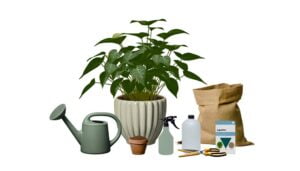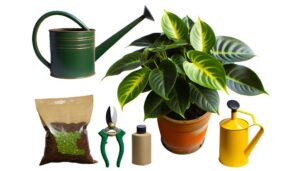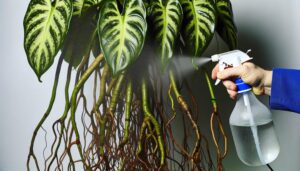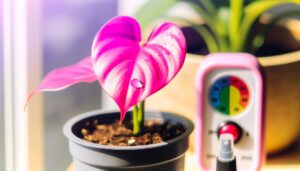What Are the Care Requirements for a Philodendron Xanadu Plant?
Philodendron Xanadu, a tropical plant, requires specific care for prime growth. It thrives under bright, indirect light, ideally near north or east-facing windows.
Its preferred soil is well-drained, fertile, and rich in organic matter with a pH of 6.0 to 7.0. Maintaining a temperature between 65°F to 75°F and humidity levels around 60-70% promotes its energy.
Water when the top inch of soil dries and apply 20-20-20 slow-release fertilizer every six weeks. Annual pruning and biennial repotting also contribute to its health.
Further examination of soil and fertilization essentials and pruning techniques can provide additional insights.
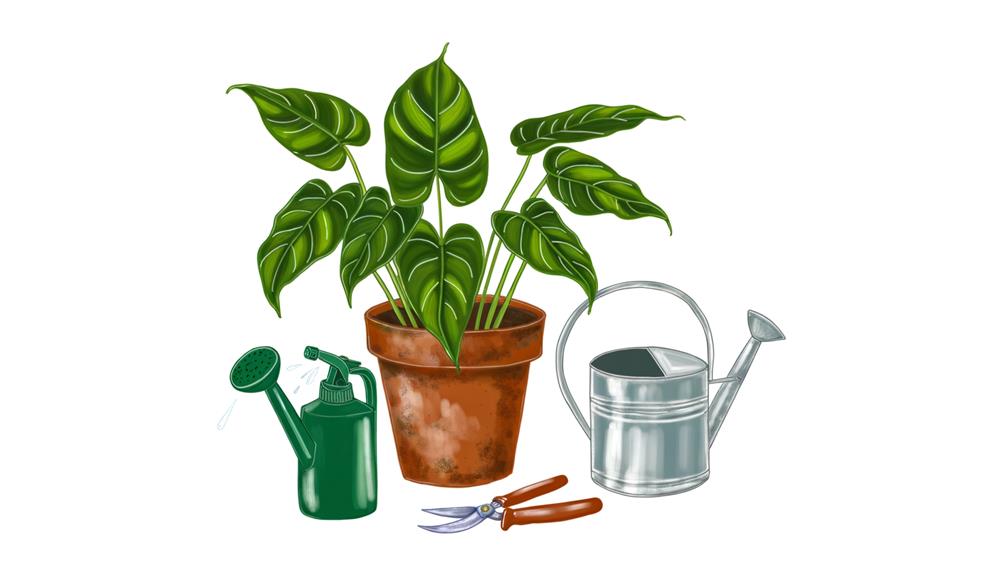
Key Takeaways
- Philodendron Xanadu thrives in bright, indirect sunlight and temperatures between 65°F and 75°F.
- It requires moist, well-drained soil and watering when the top inch of soil is dry.
- The plant benefits from a well-draining soil mix rich in organic matter and a pH of 6.0 to 7.0.
- A slow-release fertilizer mix of 20-20-20 is ideal every six weeks, adjusting frequency in winter.
- Pruning should occur annually and repotting every 2-3 years using a well-draining, peat-based potting mix.
Understanding Philodendron Xanadu Basics
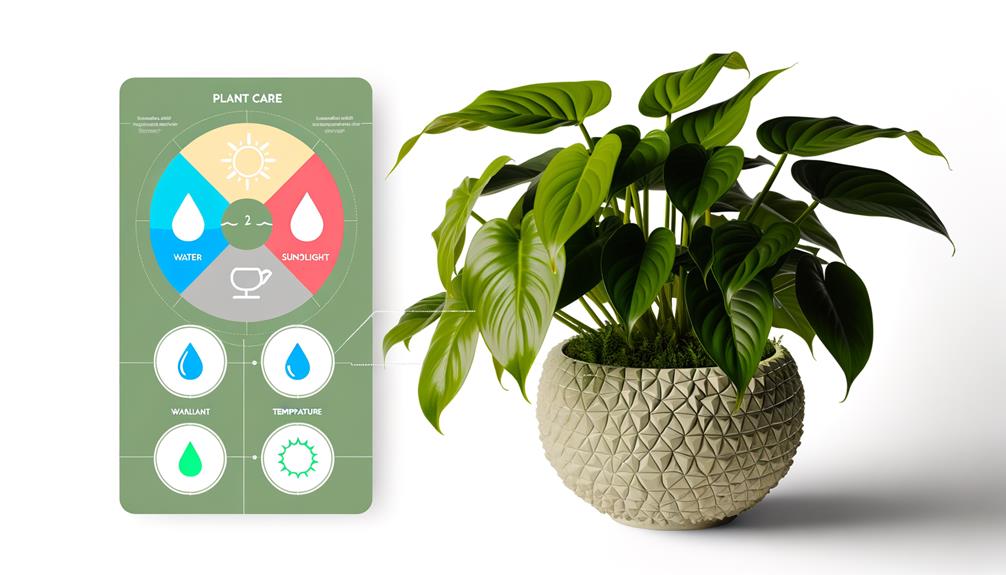
The Philodendron Xanadu, a species of the larger Philodendron genus, is a unique tropical plant renowned for its lush green foliage and adaptable nature, making it a popular choice for indoor and outdoor gardening.
Native to Brazil, this versatile species thrives in various climates and conditions. The Xanadu is a clumping philodendron, forming dense, compact clusters of long, slender leaves that lend a tropical touch to any environment.
Its adaptability extends to soil preferences, flourishing in well-drained, fertile soils. However, it is sensitive to overwatering, requiring careful attention to moisture levels. Ideal temperatures range from 65°F to 75°F (18°C to 24°C), with tolerance for slightly higher or lower temperatures.
Understanding these basics will set the foundation for successful Philodendron Xanadu care.
Ideal Lighting Conditions
Exploring the spectrum of light needs, Philodendron Xanadu thrives in bright, indirect sunlight, demonstrating a capacity for adaptability across a range of light conditions.
Ideally, a north or east-facing window would provide the perfect degree of filtered light, allowing for best photosynthesis without causing leaf burn from excessive radiation.
However, the Xanadu's resilience extends to lower light conditions, though growth may be slower and leaves may appear less vibrant.
Avoid placing the plant in direct, intense sun, as this can lead to photoinhibition, a process that hampers photosynthesis and potentially damages the plant.
Therefore, achieving the right balance of light exposure is crucial to maintaining the vitality of your Philodendron Xanadu and fostering its lush, tropical aesthetic.
Watering Your Philodendron Xanadu
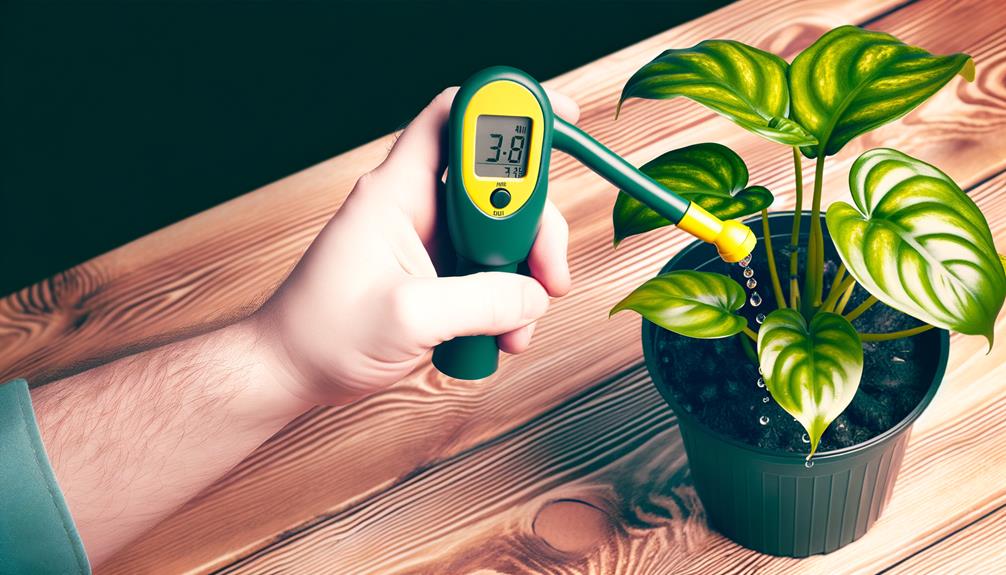
Understanding the water requirements of your Philodendron Xanadu is essential to its health, as these tropical plants thrive in moist but well-drained soil conditions. Overwatering, or waterlogged soil, can lead to root rot and subsequently, plant death. It's advisable to water your Philodendron Xanadu once the top inch of soil is dry, typically once every 7-10 days, depending on environmental conditions.
Humidity also plays a vital role in maintaining the plant's health. A hygrometer can help you monitor the humidity levels to ensure they stay between 60-70%, which is ideal for the plant. If you live in a dry climate, consider using a humidifier or a pebble tray with water to increase the surrounding humidity.
Proper watering is necessary for a thriving Philodendron Xanadu.
Soil and Fertilization Essentials
Understanding the best soil mix for Philodendron Xanadu is crucial to its flourishing growth and development.
The proper balance of nutrients, achieved through an appropriate fertilization routine, can greatly enhance the plant's health and robustness.
This section will explore the specific components of an ideal soil mix, as well as the frequency and type of fertilization recommended for this plant species.
Ideal Soil Mix
The Philodendron Xanadu grows best in a well-draining soil mix that is rich in organic matter, which plays a key role in providing important nutrients and fostering ideal growth.
The ideal soil mix consists of peat moss, perlite, and compost in equal proportions. Peat moss improves the soil's moisture capacity, crucial for this tropical plant's hydration needs. Perlite, on the other hand, enhances soil aeration, promoting root health and preventing water-logging. Compost enriches the soil with beneficial microorganisms and additional nutrients.
A pH of 6.0 to 7.0 is preferred to maintain the soil's nutrient availability. Regular monitoring and adjustment of soil condition contributes to the Xanadu's lush green leaves and robust growth habit.
Fertilization Frequency and Type
To guarantee the best health and growth of a Philodendron Xanadu, appropriate fertilization, both in frequency and type, plays an indispensable role. This plant benefits from a balanced, slow-release fertilizer, rich in macro and micronutrients, applied every six weeks during the growing season.
The ideal formulation is usually a 20-20-20 mix, signifying equal parts of nitrogen, phosphorous, and potassium. Nitrogen aids in leaf development, phosphorous helps with root formation and flower production, while potassium strengthens the plant's overall system. Avoid over-fertilization, which may lead to salt accumulation, causing root burn.
In winter, as the plant's growth slows, reduce fertilization frequency. Always remember, before applying any fertilizer, it's important to water the plant to prevent root scorching.
Pruning and Repotting Guide
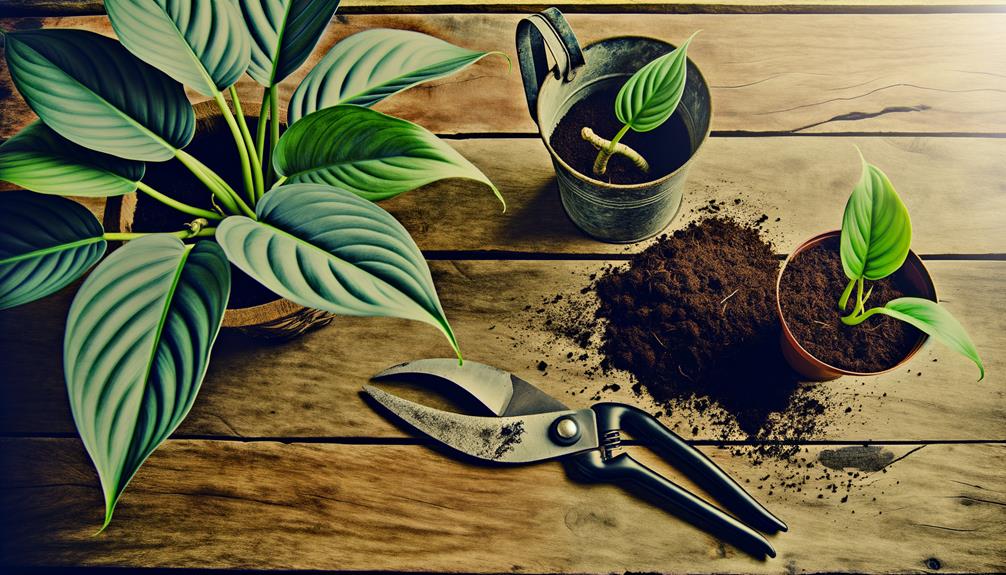
Initiating the pruning and repotting process for a Philodendron Xanadu requires careful attention to detail and a delicate touch to guarantee plant health and aesthetics.
- Pruning:
This should be conducted annually, typically in late winter or early spring. Use sharp, sterile pruners to remove dead or yellowing leaves at their base.
- Repotting:
Philodendron Xanadu enjoys roomy pot conditions. Change the pot every 2-3 years, or when roots start to crowd the pot's edges.
- Potting mix:
Use well-draining, peat-based mix. It should be rich in organic matter, ensuring best plant growth.
- Post-repotting care:
Water the plant thoroughly after repotting, allow it to drain, then place it in a location with indirect sunlight.
Dealing With Possible Pests
Exploring the world of potential pests, a Philodendron Xanadu may encounter a variety of unwanted visitors, such as mealybugs, spider mites, and aphids, that can greatly impact plant health if not promptly addressed. These pests can lead to poor plant growth, yellowing leaves, and a generally unattractive appearance.
To assist in identifying and managing these pests, here's a simple table:
| Pest | Signs | Treatment |
|---|---|---|
| Mealybugs | White cottony substance on leaves/stems | Use insecticidal soap or neem oil |
| Spider Mites | Yellow speckles on leaves, fine webs | Mitigate with insecticidal soap or beneficial insects |
| Aphids | Distorted new growth, honeydew secretion | Apply insecticidal soap, or introduce ladybugs |
Conclusion
To sum up, the Philodendron Xanadu is a hardy and adaptable indoor plant that thrives under particular circumstances. By keeping the correct balance of light, water, soil, and fertilization, the plant will prosper.
Routine trimming and pest management practices guarantee its robust growth. To wrap it up, the Philodendron Xanadu needs regular care and dedication, but its luxuriant, exotic charm justifies the investment.
Consequently, grasping its care needs is crucial for fruitful cultivation.

